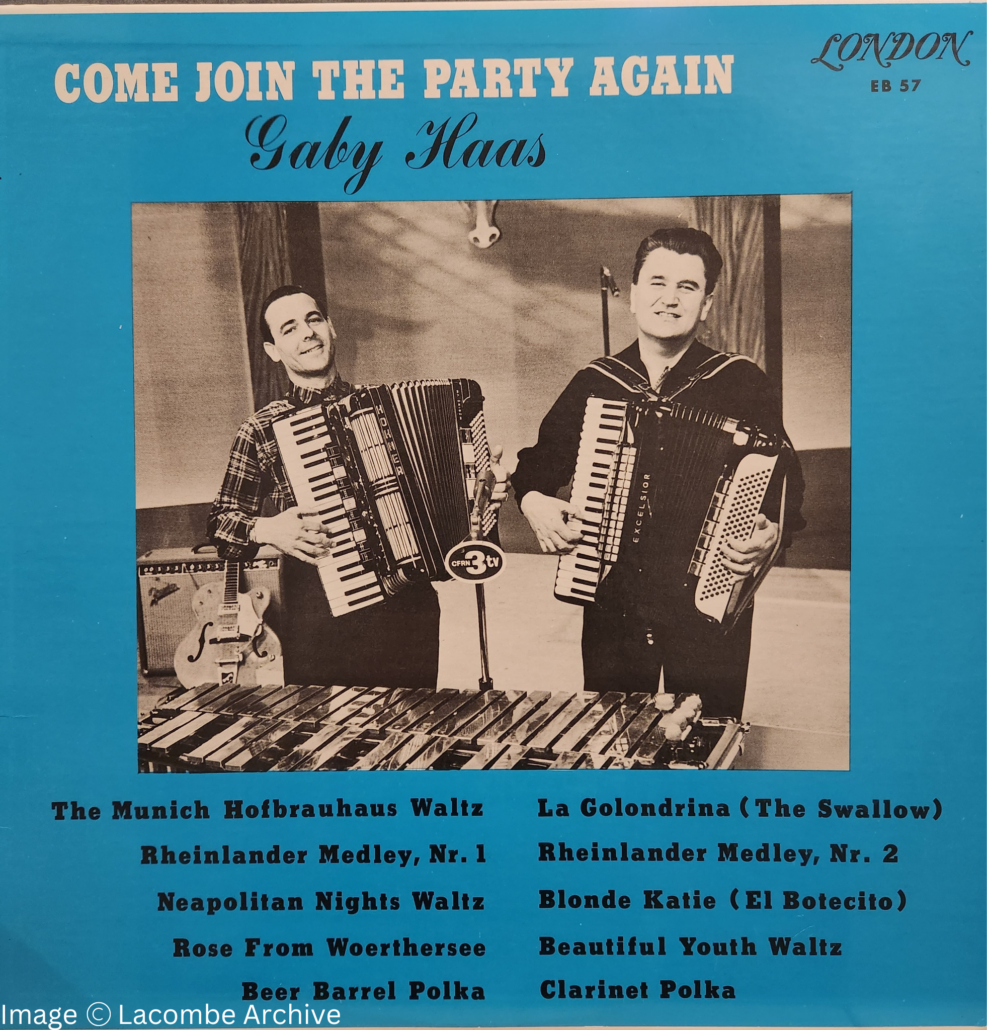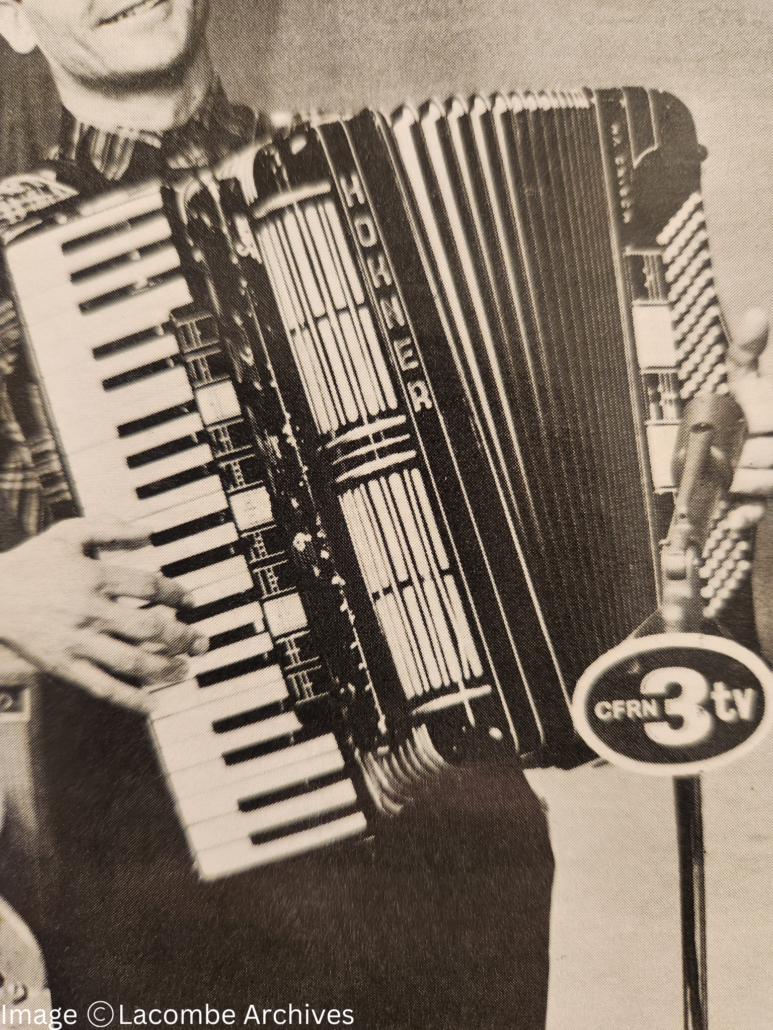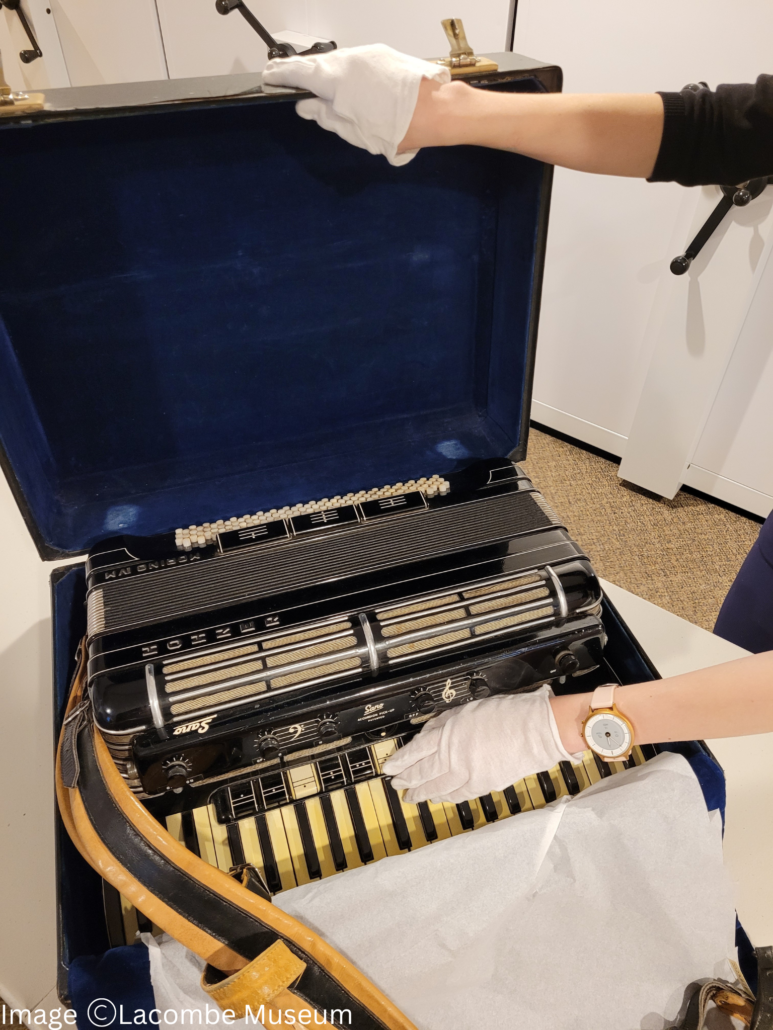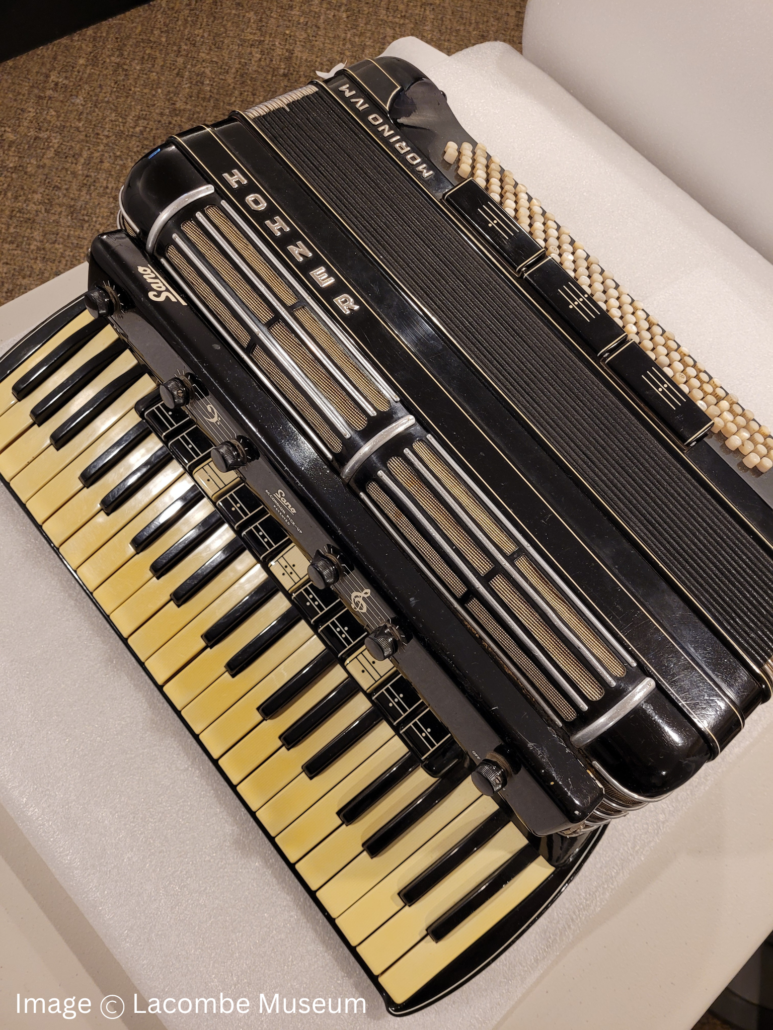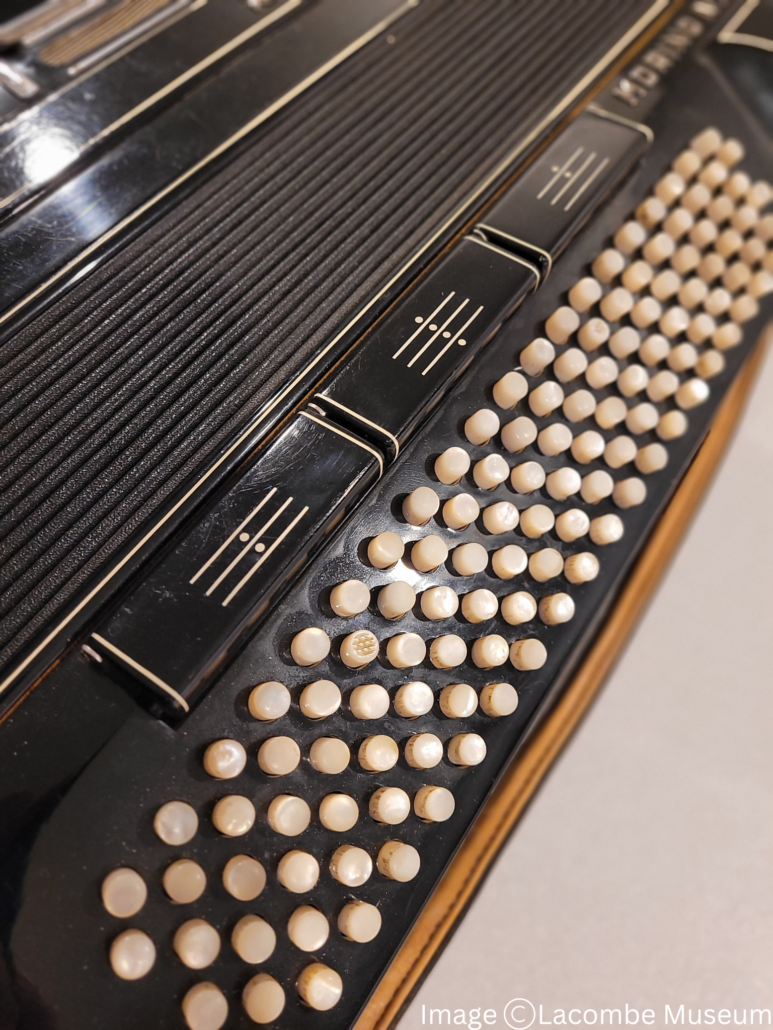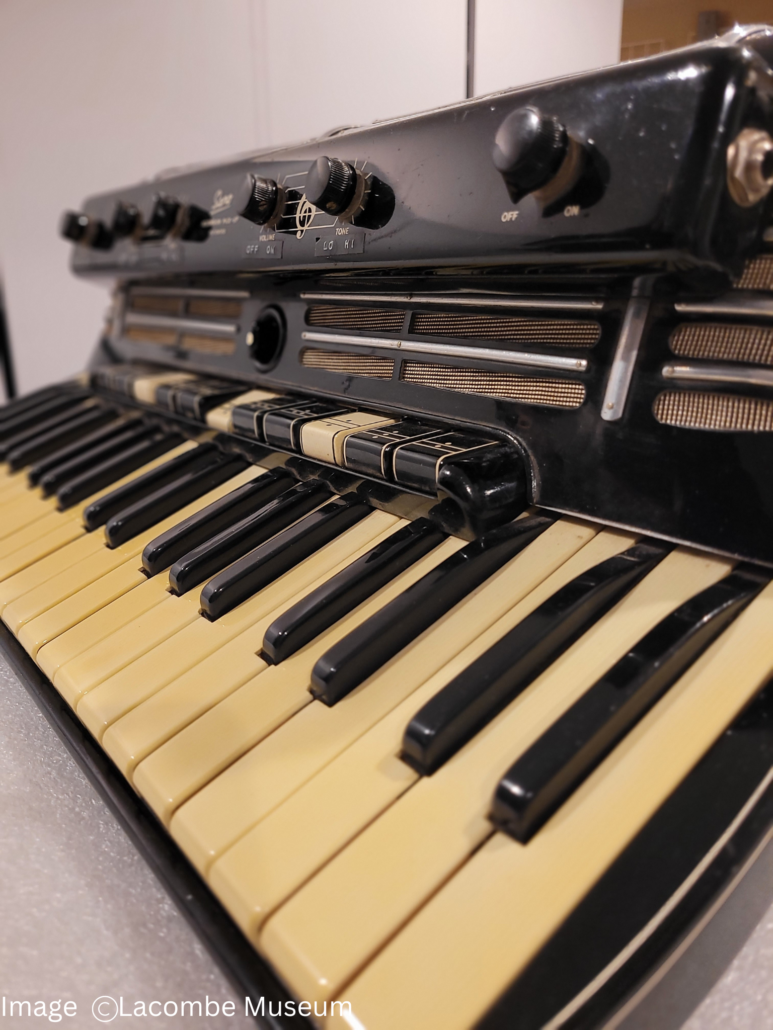Gaby Haas Show Hohner Accordion
One of the more famous items in our collection is this Hohner Piano Accordion. This piece was donated by long-time member and contributor to the museum, Bill Marquardt.
Step back in time with us as we explore the fascinating world of the Lacombe Museum’s collection of musical artefacts! Among the treasures we’ve collected over the years is a beautiful analog model Morino IV-M accordion, complete with five sets of reeds and ivory bass buttons.
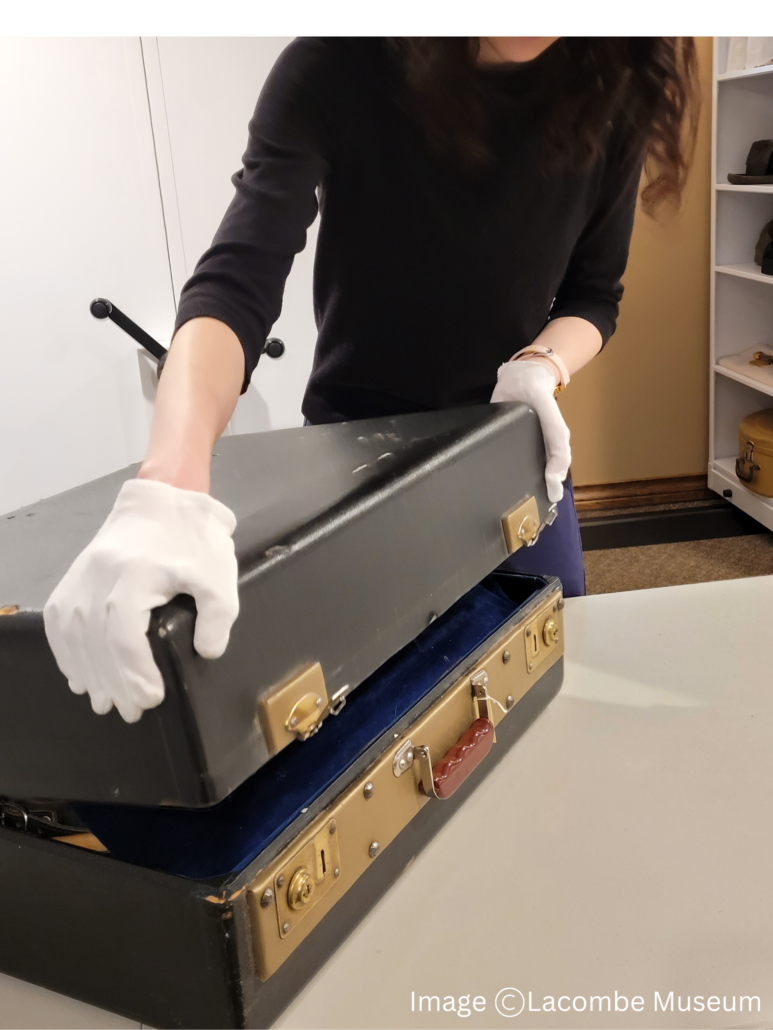
The History
This accordion was originally owned by Gordon Schmitt who played accordion with Canada’s Mr. Polka Gaby Haas, on the Gaby Haas Show on the Edmonton TV station CFRN3 in the 1950s. The pair also made multiple records together including “Come Join the Party” and “Come Join the Party Again.”
Haas was an accordionist who recorded 57 albums and 60 singles, played at more than 12,000 dances, claimed to have 6,000 polka tunes in his head, and had a personal collection of 50,000 records. When television came to Edmonton in 1953, he became a host and regular performer on CFRN for 20 years. He owned the European Music Shop at 10249 97th Street and the dine-and-dance Hofbrauhaus restaurant just down the block. – “Canada’s Mr. Polka – Gaby Haas”, Edmonton as a City Museum

Bill Acquires the Accordion
The story of how Bill Marquardt came to own the Morino IV-M accordion is a true testament to the power of chance encounters and shared passions. In the late 1970s, Bill was on the hunt for a new accordion and found himself at a music store in Edmonton. However, instead of finding the instrument he was looking for, he was directed to Gordon Schmitt – a fellow accordion enthusiast who was selling many of his own.
Despite knowing that Schmitt’s accordions were likely out of his price range, Bill was eager to meet him and share his love of the instrument. And it seems that the feeling was mutual, as the two quickly bonded over their shared passion for all things accordion. Perhaps it was this shared appreciation that led Schmitt to offer Bill a once-in-a-lifetime deal on the Morino IV-M accordion – just $500! With the stars aligned and the perfect amount of cash on hand, Bill couldn’t resist the opportunity and snapped up the beautiful instrument.
And so, thanks to a chance encounter and a shared love of the accordion, this Morino IV-M found its way into the hands of a grateful new owner, where it remains to this day as a cherished relic of a bygone era.
The Accordion
This particular accordion is an analog model Morino IV-M with five sets of reeds and ivory bass buttons. The Hohner Morino accordions were known for their high-quality materials, excellent tone, and versatility that could be used to play anything from early 1920s jazz to modern punk-rock sounds.
In 2023 nearly all accordions are electric; however, when Schmitt was using this accordion in approximately the early 1960s, he added his own after-market Sano Accordion electric pickup so the accordion can be plugged into an electric amplifier which allows the instrument’s sound to be amplified far better than if one were to just play in front of a microphone. Luckily, this accordion is in tune and is still playable.
The Value
At the time that this was purchased, the accordion for $500 which would equal approximately $2,500 now. It was estimated that the monetary value at the time of purchase was between $9,000 and $10,000. This accordion now goes for anywhere between $3,000-$8,000 CAD.
This instrument also boasts cultural value for being a part of the mid-20th century Edmonton pop culture, music, and media scene.
Written by Brittany Kerik, Archival Assistant, Lacombe & District Historical Society.
Edited by Melissa Blunden, Executive Director and Curator, Lacombe & District Historical Society.
